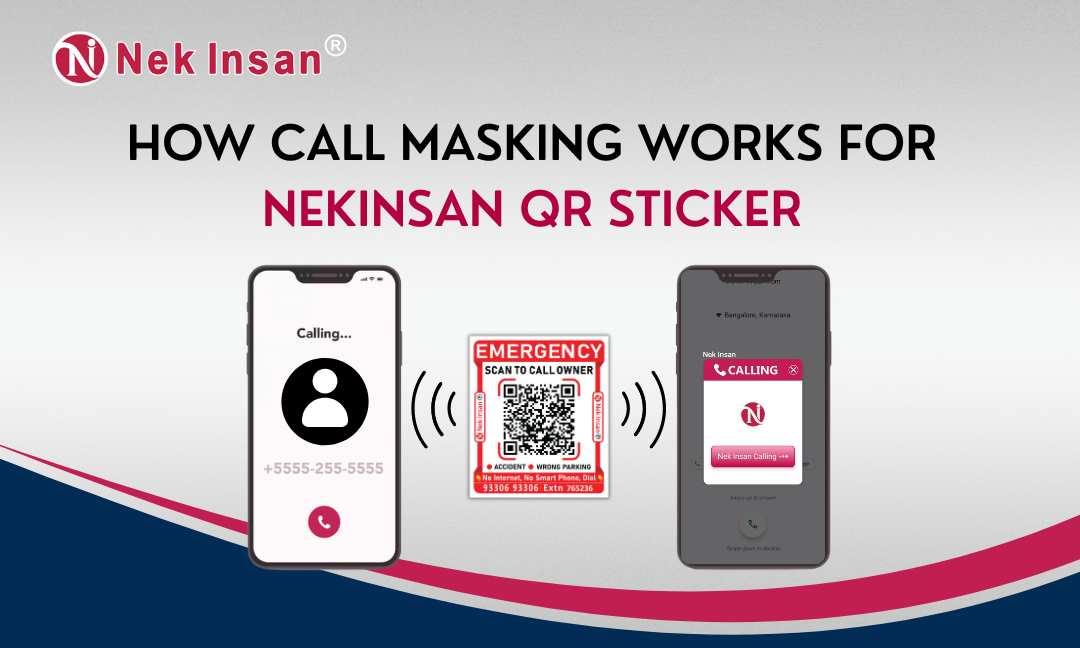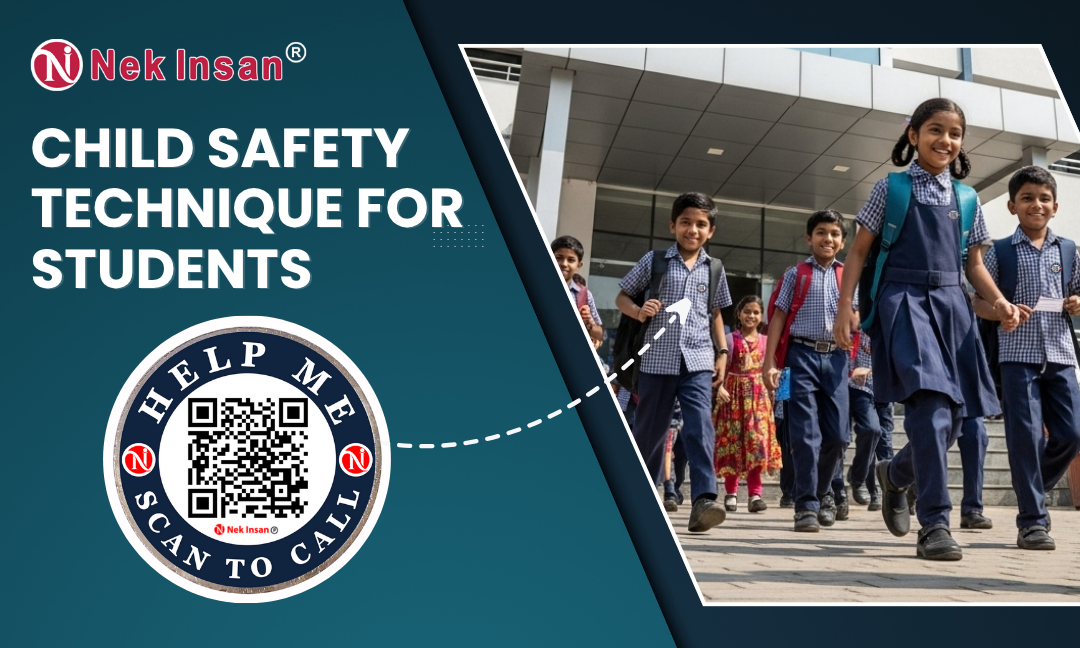
How Call Masking Works For NekInsan QR …
14 hours, 41 minutes
Search to learn about new product features, the latest technology and updates

Views: 24 | Updated: 19 hours, 10 minutes ago
Here are comprehensive child safety techniques for students, categorized for clarity:
These are foundational skills every child should learn:
Know Personal Information: Teach children their full name, home address, and a parent's contact number (and a backup contact like a grandparent). This is crucial in case of an emergency.
"No, Go, Yell, Tell" Rule: Empower children to say "No" firmly if someone makes them feel uncomfortable, "Go" away from the situation immediately, "Yell" loudly for help, and "Tell" a trusted adult about what happened.
Trusted Adults: Help children identify a network of trusted adults they can go to for help, such as parents, teachers, school counselors, family members, or close family friends.
Stranger Safety:
Never go anywhere with a stranger, even if they claim to know the child or the child's parents, or promise treats. Reinforce that parents would always send a known family member in an emergency.
Do not accept food, gifts, or invitations from strangers.
Do not share personal information (name, address, phone number, photos) with strangers, especially online.
Body Safety ("Good Touch, Bad Touch"): Educate children about appropriate and inappropriate touch. Teach them that their body belongs to them, and they have the right to say no to any touch that makes them feel uncomfortable. Emphasize that they should immediately report any unsafe or uncomfortable touch to a trusted adult.
Trust Your Instincts: Teach children to listen to their gut feelings. If a situation or person makes them feel uneasy, they should remove themselves from the situation and seek help.
Online Safety:
Be cautious about sharing personal information online.
Avoid interacting with strangers online.
Report any instances of cyberbullying or inappropriate content to a trusted adult.
Be aware of social media settings and avoid GPS check-ins that can reveal their location.
Schools play a vital role in student safety. Students should be taught to:
Follow School Rules and Staff Instructions: This is the first step to staying safe. Students should listen to teachers and school staff during class, drills, and emergencies.
Emergency Procedures:
Know the school's emergency procedures for fire drills, lockdown drills, and evacuation routes.
Know assembly points.
Practice these drills regularly to react confidently and safely in a real emergency.
Walk, Don't Run: Especially in hallways, staircases, and crowded areas to prevent slips, falls, and collisions.
Keep Hands and Feet to Yourself: Respect personal space to avoid accidental injuries and promote a respectful learning environment.
Stay Within School Premises: Children should not leave school without permission from a teacher or an approved guardian.
Play Safely on the Playground: Use equipment properly, avoid climbing on areas not meant for play, and take turns.
Report Suspicious Behavior: Encourage students to report any unfamiliar individuals on campus or behavior that makes them feel uncomfortable or unsafe to a teacher or staff member immediately.
Use Classroom Tools and Supplies Responsibly: Follow teacher instructions, pass sharp objects safely, and never misuse materials.
Maintain Good Hygiene: Wash hands regularly, cover mouths when coughing or sneezing, and avoid sharing personal items to prevent the spread of illness.
Buddy System: Encourage students to use the "buddy system" when moving around the school or during outdoor activities, especially in less supervised areas.
Report Damaged Equipment: Students should report any broken or damaged equipment (e.g., sharp objects, broken glass) immediately to a teacher.
By consistently teaching and reinforcing these techniques, students can develop the awareness and skills needed to stay safe in various situations.
NekInsan offers "Child Safety QR" products designed to enhance child safety, particularly for reuniting lost children with their parents. These are essentially smart badges or stickers with unique QR codes.
QR Code Badge/Sticker: Parents purchase these durable badges or stickers, which can be attached to a child's clothing (e.g., shirt with a pin), backpack, or wristband.
Registration and Profile Setup: Parents register their child's details on the NekInsan platform (via their app or website). This links the unique QR code to a secure online profile containing crucial information:
Child's name and photo
Emergency contact numbers (parents, guardians, other trusted adults)
Medical information (allergies, conditions, medications)
Any special needs or instructions
Parents can update this information as needed.
Scanning by a Good Samaritan ("Nek Insan"): If a child gets lost or needs help, any person with a smartphone can scan the Nek Insan QR code on the badge. This can be done using the Nekinsan app or any standard QR scanner (like Google Lens, Paytm, GPay, or the phone's built-in camera).
Instant Notification and Siren Alert: As soon as the QR code is scanned, an immediate alert, often accompanied by a siren sound, is sent to the registered contact numbers of the child's parents. This alert is designed to get their attention even if their phone screen is locked.
Photo/Video Capture and Location Sharing: Upon scanning, the scanner's phone camera typically activates, allowing them to take a photo or video of the child and their surroundings. This visual information, along with the exact date, time, and GPS location of the scan, is instantly transmitted to the parents. This provides crucial context for the parents about where their child was found.
Confidential Communication (Masked Calls): The Nekinsan system facilitates communication between the scanner and the parents using a masked or virtual phone number. This means the scanner's actual phone number is not revealed to the parents, and vice versa, protecting the privacy of both parties while enabling direct contact. Parents also receive a call-back option to initiate communication with the scanner.
Emergency Helpline Access: After the initial contact, the scanner's phone can display emergency helpline numbers (like Police, Ambulance, Fire) to allow them to seek additional professional help if needed.
Data Privacy and Security: Nekinsan emphasizes that only the designated parents or guardians have access to the child's sensitive information. Call and scan logs are maintained for security and record-keeping.
Benefits of NekInsan Safety QR for Child Safety:
Quick Identification: Instant access to essential information for anyone who finds a lost child.
Real-Time Alerts: Parents receive immediate notifications and location data.
Confidential Communication: Parents can connect with the finder without sharing their personal number.
Medical Information Access: Crucial in emergencies for providing appropriate care.
Reduced Panic: Provides concrete information to parents during a stressful situation.
Ease of Use: Simple scanning process accessible to anyone with a smartphone.
SOS Feature: Beyond child safety, the badge can include an SOS feature that parents can activate in case of emergencies.
NekInsan also offers QR code stickers for other items like cars, bikes, pets, bags, keys, and mobile phones, all functioning on a similar principle of quick identification and communication in case of loss or emergency.
